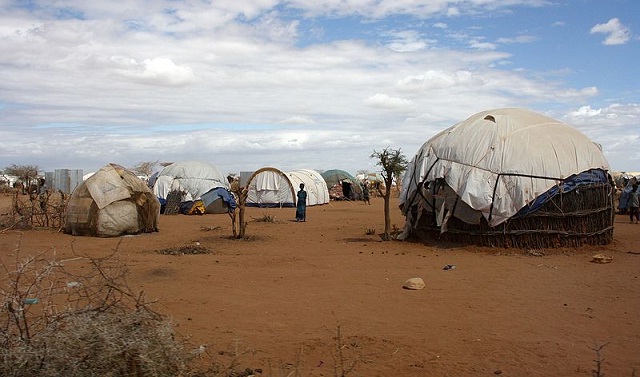
Dadaab, Kenya | AFP | The children can’t believe their luck: storms and showers have turned their dirt football pitch into a lake. Youngsters scamper and splash through the murky water, chasing one another, leaping and laughing.
Any entertainment is welcome in Dadaab, one of the biggest refugee bases in the world. An estimated 235,000 people, most of them Somalis, live a bleak life largely defined by drought, dust and destitution.
But the children’s fun is fleeting. The seasonal rains also bring cholera and malaria, destroy rickety hand-made homes and paralyse the aid operation that is the refugees’ lifeline.
Some tracks and paths in the camps are thigh-deep in water. A woman gathers her soggy hijab about her as she wades through it. A man rolls up his trousers as high as he can but they still get wet. Progress is slow.
“We have nowhere to sleep… the water has covered everything,” said Hassan Yussuf, a 34-year-old father of five.
The earth floor of his home, built of thorny sticks and corrugated tin, is under 20 centimetres (almost eight inches) of water.
– Search for dry land –
The family has relocated to the foot of a nearby tree, their meagre belongings hung in its branches.
Inside their hut only one bed remains, above the waterline for now. On it and still dry lies Yussuf’s blind, 80-year-old mother.
“I hang out in one place or another, always looking for somewhere dry,” he said, hoping the night will not bring more floods.
“Dadaab is located on a plain where the rainwater does not drain easily, there are no drainage systems and no nearby river,” explained Caleb Odhiambo of charity Save the Children, which works in the camps. “It can be several weeks before the water returns to a normal level.”
In the meantime, pit latrines are overflowing, contaminating the water and threatening to spread disease.
Cholera is the greatest danger, especially for children who play in — and anyone who drinks — the contaminated waters.
Every year rainy-season cholera outbreaks infect many hundreds of the refugees who have fled cycles of civil war and famine in Somalia since 1991.
 The Independent Uganda: You get the Truth we Pay the Price
The Independent Uganda: You get the Truth we Pay the Price


